Chinese App Market: How To Launch Your App In China?
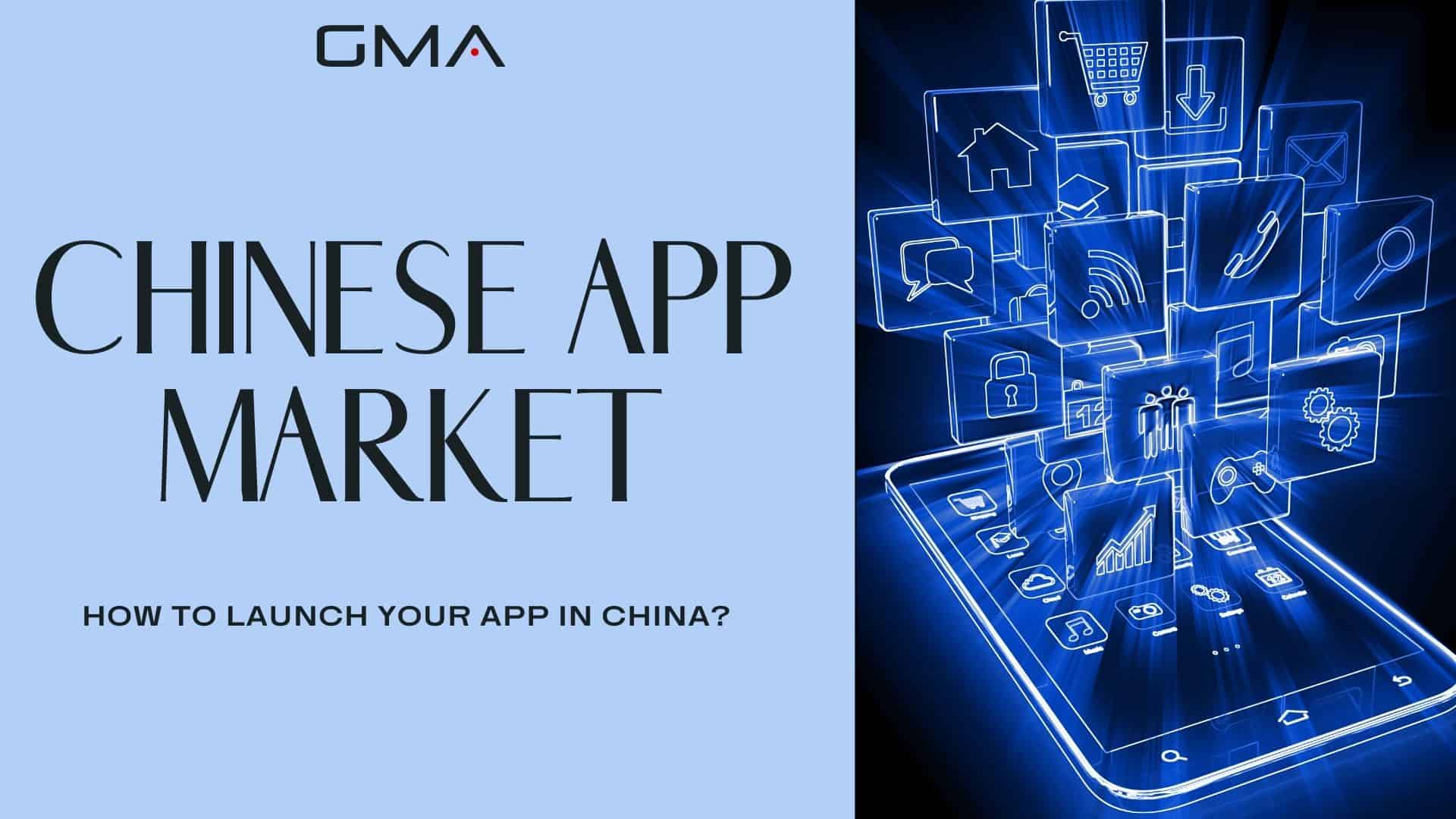
The Chinese app market is the largest and most lucrative in the world, with over a billion mobile users online, and it’s crucial to understand its size, key players, distribution channels, localization requirements, and regulations before launching your app.
In this blog post, we’ll walk you through everything you need to know about launching your app in China – from localization strategies to marketing techniques.
Cost-Effective Agency
KPI and Results focused. We are the most visible Marketing Agency for China. Not because of huge spending but because of our SMART Strategies. Let us help you with: E-Commerce, Search Engine Optimization, Advertising, Weibo, WeChat, WeChat Store & PR.
How the Chinese App Market Benefits Foreign Businesses
- Vast market potential with a large population and smartphone user base.
- Mobile-first culture with high smartphone reliance for various activities.
- Growing middle class and increased disposable income for consumer spending.
- Thriving e-commerce opportunities through platforms like Taobao and JD.com.
- Collaborations and partnerships with Chinese companies for market access.
- Access to a vibrant tech ecosystem and innovation in sectors like fintech and AI.
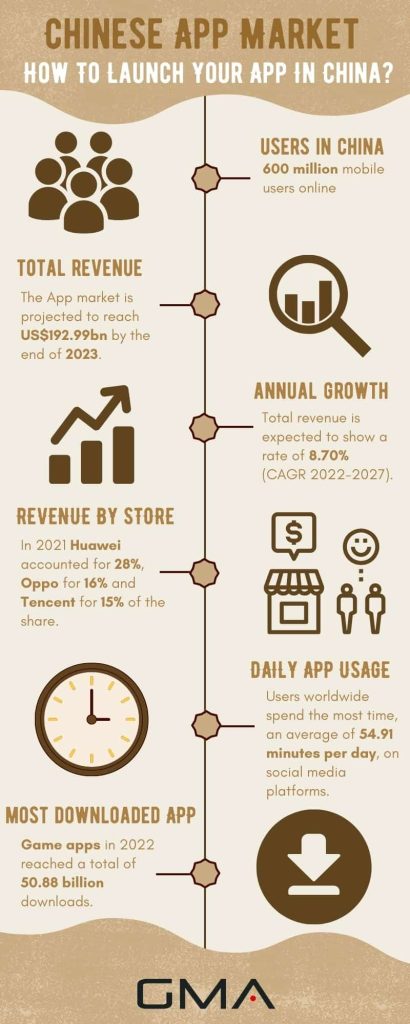
Size And Key Players
According to Statista, a global comparison reveals that most revenue is generated in China (US$166.60bn in 2022), and is expected to show an annual growth rate (CAGR 2022-2027) of 8.70%, resulting in a projected market volume of US$269.40bn by 2027.
Unlike Western markets dominated by Google Play Store and Apple App Store, these platforms are not available in China. The major players dominating this space include tech giants like Huawei, Oppo, and Tencent (known for apps such as WeChat).
These companies oversee many popular apps covering various genres; from social media and entertainment to lifestyle services like online shopping or food delivery – all tailored to appeal to consumer behavior differences in China compared to Western audiences.

App Distribution Channels
In China, there are numerous third-party Android stores, with Huawei AppGallery leading the pack alongside other major players such as Tencent’s MyApp, Oppo Software Store, Baidu Mobile Assistant, and 360 Mobile Assistant.
To succeed in this fragmented market, one must ensure that their app is available on multiple popular channels to reach as many potential users as possible. This includes not only localizing your app for language and cultural differences but also adapting it according to each platform’s requirements and regulations.
For instance, working closely with Huawei AppGallery could provide insight into China’s mobile app economy where 28% of global app spending comes from Chinese users – capturing a significant portion of this growing consumer base can result in lucrative opportunities.
By carefully planning your entry strategy into the Chinese mobile market through its various distribution channels, you stand a greater chance of reaching millions of engaged smartphone users eager to explore new apps from overseas developers.
Localization And Regulations
When it comes to launching an app in China, one of the most critical things to consider is localization. This process involves adapting your app’s content, design elements and features to suit the needs and preferences of Chinese users. The goal is to make them feel like they are using a product specifically built for them. It’s crucial to remember that localization goes beyond language translation; it also involves understanding cultural nuances, user behavior, and regulations.
Preparing Your App For China
Cultural Adaptation
To penetrate this unique market, it’s essential to understand and adapt to Chinese culture, customs, language, and preferences. This includes taking into account different social norms, symbols, and images that are perceived differently by Chinese audiences than by Western consumers.
To culturally adapt your app successfully, you will need professional localization services that can provide translation of the app name, description, and in-app content into Mandarin or other local languages. Additionally, it’s important to customize features such as payment options or use popular social media platforms like WeChat when marketing your product.
An example of successful cultural adaptation is Starbucks’ entry into China‘s fast-growing coffee market. Starbucks tailored its menu offerings by introducing locally-inspired drinks like the “Red Bean Frappuccino”, which resonated with Chinese customers’ preference for sweeter tastes over traditional bitter coffee flavors.
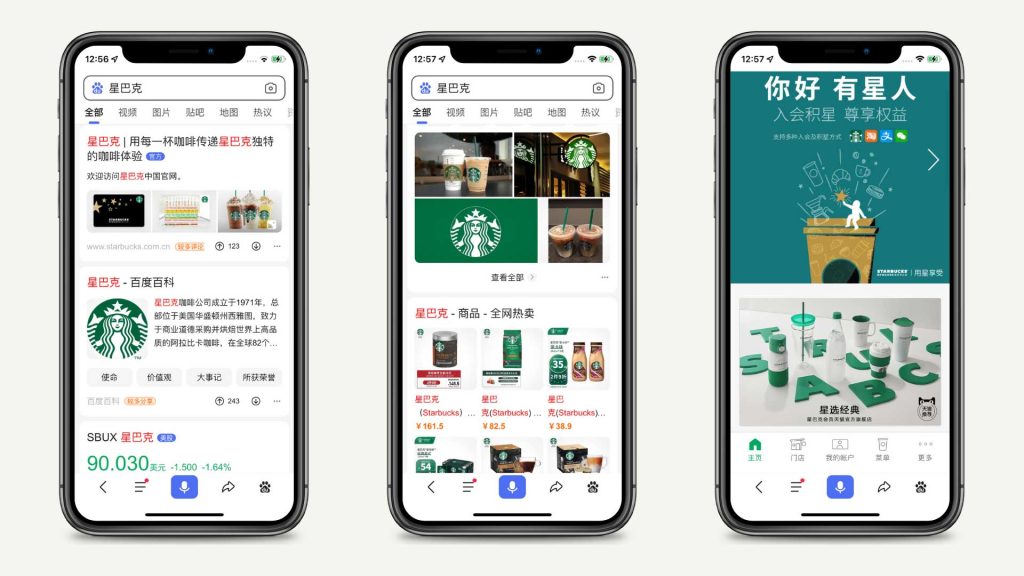
By carefully adapting its brand image and products through extensive research on its customer base’s needs and cultural preferences, Starbucks was able to build a loyal following amongst the growing middle class in China which value premium-priced goods from foreign brands with more disposable incomes.
Language And Content Localization
Start by researching what appeals to your target audience in China. Conducting keyword research can help you understand common search terms that will resonate with users. Use localization tools like translation software or hire a native speaker who understands linguistic nuances to ensure accurate translations.
Remember that China has strict laws on internet censorship, so consider adapting metadata like descriptions and titles to comply with regulations. Be mindful of any sensitive topics while creating content for localization purposes as well.
App Store Optimization
One of the most critical stages of launching your app in China is optimizing it for the app stores. App Store Optimization (ASO) involves various techniques aimed at making sure your app ranks high in Chinese app stores, which translates to more downloads and user engagement.
ASO includes keyword research, creating compelling titles and descriptions, and designing captivating screenshots and videos, among other aspects. For instance, optimizing your description with relevant keywords like “social media” or “gaming” can positively impact how often your app appears when users search for those terms.
Localization also plays a crucial role in ASO. Ensuring that every detail about your app – from features to screenshots – is displayed appropriately for a Chinese audience can enhance user experience and improve engagement levels. As an example, mobile game developer Supercell localized their popular title Clash of Clans into simplified Chinese language as part of its localization strategy; this helped increase downloads by 70%, allowing them to tap into the vast Chinese market effectively.
App store optimization isn’t just important during launch either- ongoing optimization efforts will help you maintain or improve rankings over time. It’s essential to keep track of key metrics such as retention rates, reviews/rating feedback from users ensuring there are no issues affecting performance on particular devices or within specific regions improving visibility on both Apple’s App Store and Android marketplace where possible using different marketing tactics based on each platform’s traffic sources!

Intellectual Property Protection
One of the most critical aspects of launching your app in China is protecting your intellectual property (IP). Chinese copyright law offers a quick and easy method of procuring IPR protection for app developers, but it’s crucial to ensure that your IP enforcement strategies are valid under Chinese law. This includes registering trademarks and patents, monitoring for infringement or misuse, and taking legal action if necessary.
When launching a mobile app in China, compliance with industry-standard safeguards to protect Personally Identifiable Information (PII) is essential. Importers manufacturing new products face particular IP risks, including counterfeiting and piracy. Implementing best practices for IP protection can mitigate these risks, such as establishing strong contracts with partners and suppliers and using encryption technology to secure data access.
Navigating Censorship And Content Restrictions
Understanding Content Guidelines
The Chinese government has a history of tightly monitoring internet access, blocking website content, and categorizing online information to maintain controlled media. It’s essential to review local content regulations before launching your app in the market.
For example, TikTok (known as Douyin in China) has different regulations regarding user-generated content in China compared to other countries. Understanding these variances can help you tailor your approach when it comes to creating and promoting your app.
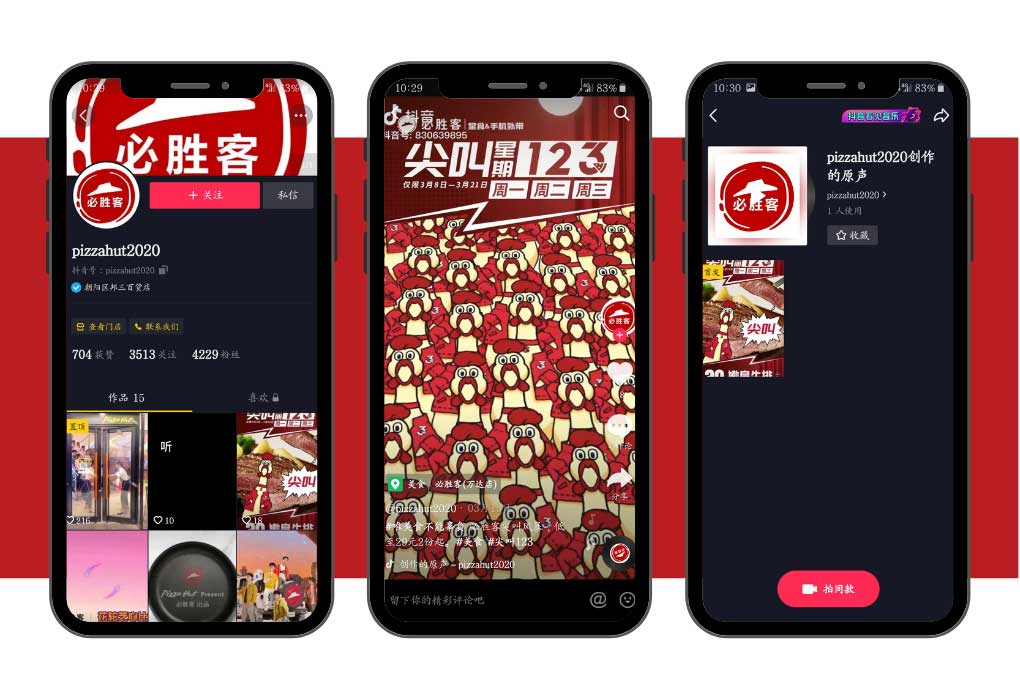
Identifying And Avoiding Sensitive Topics
One strategy for identifying sensitive topics is through careful monitoring of news coverage and social media discussions within China. This will help you understand what types of content are likely to draw scrutiny from the Chinese government’s online watchdogs. By avoiding controversial topics related to politics or current events within China altogether, you can ensure that your app stays up and running without hitting any roadblocks due to censorship mechanisms like the Great Firewall of China.
Strategies For Compliance
Companies need to establish effective provisions to protect user information, including real-name verification in order to comply with data privacy laws.
Administrators of independently operated social media accounts are required by law to obtain approval from the government before publishing content. By planning ahead and taking steps such as establishing partnerships with local businesses that can help guide foreign companies through the complexities of local culture, marketers will be better equipped for success in China’s rapidly growing mobile app market.
That is precisely the reason why we are here – to alleviate the burden of navigating through various regulations. We understand that staying compliant can be time-consuming and complex, which is why our team is dedicated to handling these regulatory matters on your behalf. By entrusting us with these responsibilities, you can focus your energy and resources on other crucial aspects of your business. Let us take care of the regulatory requirements, allowing you the freedom to pursue strategic initiatives and drive growth.
App Localization And Technical Considerations
Local Payment Integration
The Chinese mobile market places a high degree of trust in mobile payments, with many users relying on platforms like WeChat Pay and Alipay for their daily transactions. To effectively launch your app in China, it is essential to ensure that your app seamlessly integrates with these local payment systems.
This involves partnering with local payment providers to establish secure and efficient payment processing capabilities within your app. Additionally, it may be necessary to account for localized pricing models and subscription options to match user preferences within the Chinese market. By placing an emphasis on local payment integration as part of your overall localization strategy, you can increase user trust and engagement while driving conversions and revenue growth.
It’s important to note that integrating with local payments goes beyond simply adding a few buttons or widgets into your app – it requires deep technical expertise as well as compliance with local regulations around data privacy and security. As such, working with an experienced partner who understands the intricacies of the Chinese mobile market can provide significant benefits when launching an app in this highly competitive space.
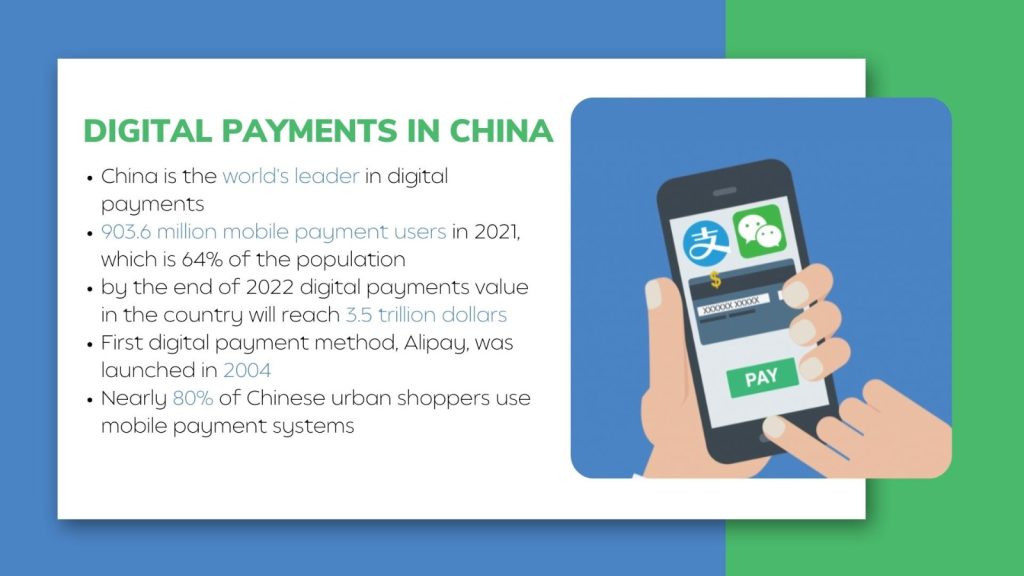
Data Privacy And Security Regulations
China has recently implemented two new laws, the Data Security Law and the Personal Information Protection Law (PIPL), which are designed to protect personal information. The PIPL is similar to GDPR laws in Europe, requiring companies to obtain user consent for collecting their data.
Additionally, China has measures in place restricting cross-border data flows and enforcing data localization. This can affect how businesses launch their apps in China as they may need to store Chinese users’ data within the country’s borders. Failing to comply with these regulations can lead to severe consequences such as fines or even a ban on operating in China.
To comply with these regulations when launching an app in China, consider technical considerations such as encrypting user data during transmission and storage of sensitive information locally. It’s also essential for businesses to review content uploaded by users regularly and have clear protocols for reporting illegal activity online.
Server And Infrastructure Requirements
It’s important to ensure that it meets the technical requirements necessary for success in this market. This entails considerations such as server and infrastructure requirements, which can vary significantly from those of other markets. For example, many Chinese users rely on slower internet connections or have limited data plans, so apps must be optimized accordingly to ensure fast loading speeds and minimal data usage.
Launching Your App In China
Partnering With Local Companies
As we already said, partnering with local companies is an essential aspect of launching your app in the Chinese market.
One example of a successful partnership is Disney’s collaboration with Tencent Holdings Ltd., one of China’s biggest tech giants. Through this alliance, Disney was able to distribute its content through Tencent’s video platform and use their payment system for transactions within its apps. Moreover, partnering with local companies also helps establish credibility among Chinese users who might see foreign brands as less trustworthy or reliable than domestic ones.
It is worth noting that building relationships and trust takes time in China; therefore establishing yourself requires active engagement with local players rather than a hands-off approach.
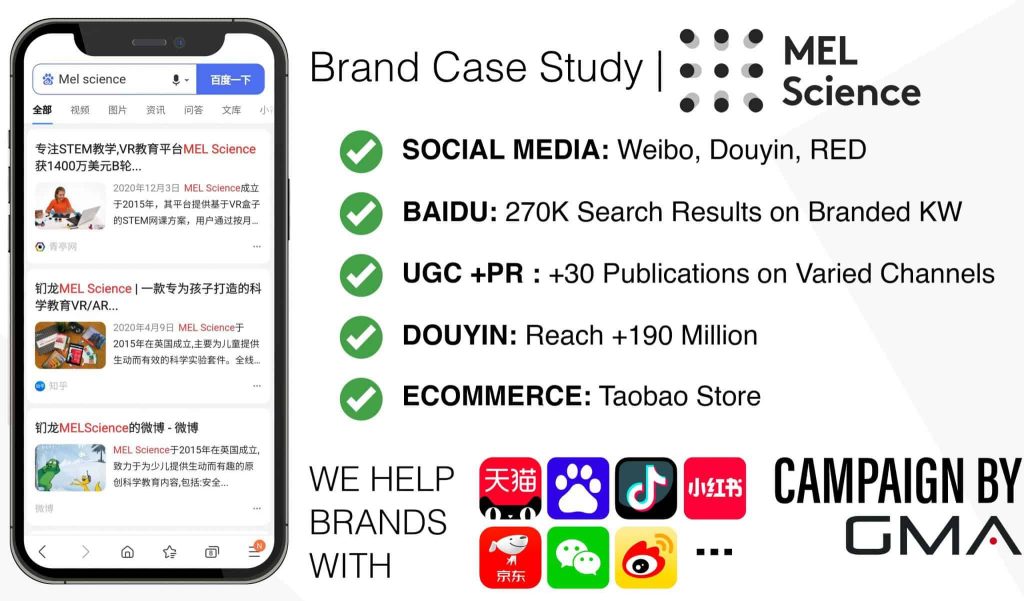
Advertising And Promotions
One effective method is leveraging the power of Chinese social media platforms such as WeChat, Weibo, and Douyin for influencer marketing campaigns. These platforms have a massive user base with high levels of engagement, making them an ideal place to promote your mobile app.
Another way to increase visibility is through QR code marketing. In China, QR codes are widely used as a way to access services quickly and conveniently via mobile devices. You can leverage this trend by including QR codes on promotional materials and products related to your app or service.
In-app advertising is also crucial for reaching potential users in China. With over 600 million active smartphone users in the country, there’s enormous potential for ad exposure within mobile apps. By implementing targeted ads that appeal directly to your target audience’s interests or behaviors, you can effectively reach audiences without overspending on advertising costs while driving user growth organically.
User Acquisition Strategies
When it comes to launching your app in China, user acquisition is an essential consideration. With nearly 1 billion mobile users in China, the potential for app downloads is vast but also highly competitive. Optimizing your listing on various Chinese app stores is one of the cheapest and most straightforward ways to acquire new users and improve your download rate.
Another effective user acquisition strategy in China is integrating with WeChat, which has over 1 billion active monthly users it is ideally used for customer support features especially if they are discussing sensitive topics related to GDPR or data protection regulations – embedding this function can give customers peace of mind about using your app while also allowing you greater access to their feedback. Besides WeChat provides numerous opportunities for social engagement marketing campaigns. It’s important to consider WeChat as part of any advertising strategy when targeting Chinese consumers because it’s where many members spend much of their daily online time-making purchases or interacting with friends somewhere else.
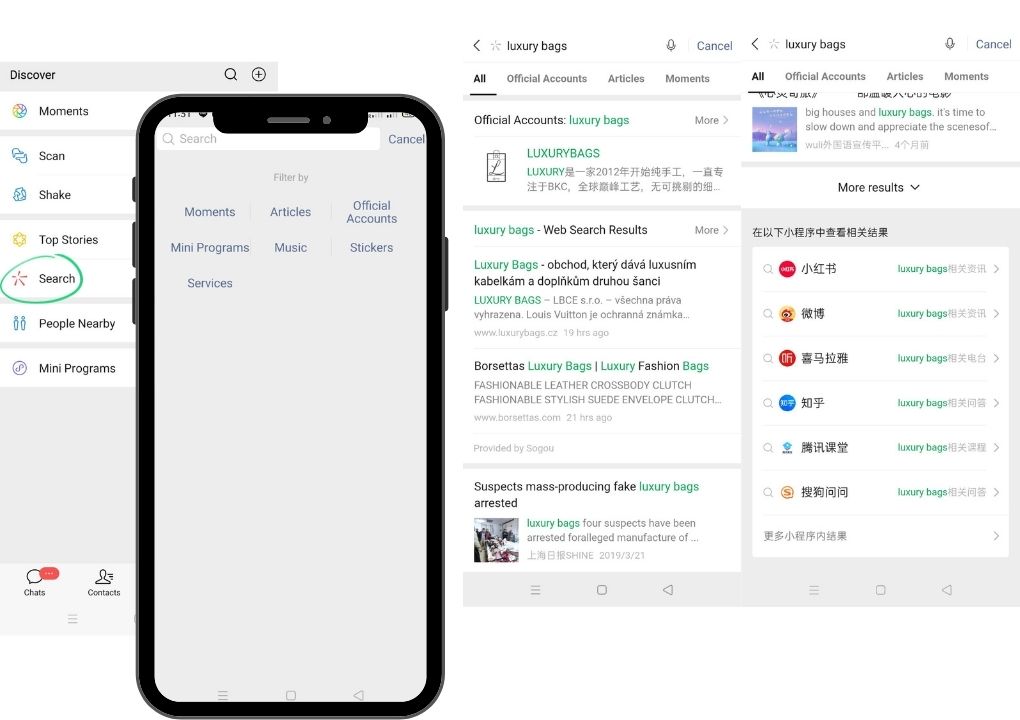
Monetization Strategies In China
In-app Purchases
This strategy involves offering additional features, premium content, or virtual goods within the app for users to purchase. In 2020, in-app purchases accounted for about 70% of total app revenue in China. Popular apps that use this strategy include video and music streaming services, social media platforms, and mobile games.
Foreign companies looking to launch their apps in China can also take advantage of this trend by incorporating local payment integration such as WeChat Pay or Alipay. These two digital wallets dominate the market with over 90% of all mobile payments made using them. Implementing these payment options will make it easier for Chinese users to purchase within your app.
However, it’s important to note that many paid and subscription-based apps struggle to generate revenue in China due to free unofficial versions being widely available. It’s crucial to offer unique and valuable content through your app that cannot be easily replicated elsewhere if you’re aiming for success with this monetization strategy.
Subscription Models
This presents an opportunity for monetization through recurring payments from users. Chinese consumers seem to have a willingness to sign up for subscription-based services, making it an attractive option for companies looking to make a profit from their apps. However, before launching your app with this model in mind, it is essential to evaluate whether the investment justifies the potential return.
Advertising And Ad Networks
Baidu, Alibaba, and Tencent dominate the internet advertising space in China, and incorporating their platforms into your marketing strategy can be beneficial for gaining exposure. Additionally, integrating with an advertising network can help manage publications and interactions to generate revenue.
Targeted advertising is also crucial for success in the Chinese app market. Conducting market research on consumer behavior and competitor analysis can provide valuable insights for creating effective ads that resonate with your target audience.
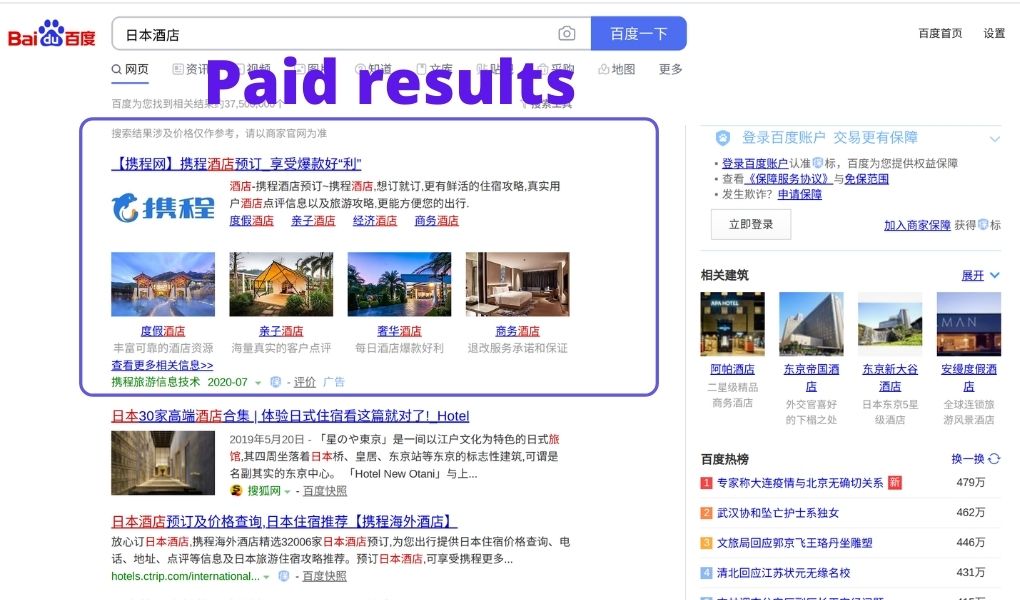
Paid Apps
One of the most common monetization strategies for non-gaming apps is through paid apps. Although it may seem counterintuitive to charge users upfront in a market where free-to-download apps dominate, paid apps can be successful if they provide unique and high-quality content or services that users are willing to pay for. However, it’s important to keep in mind that Chinese mobile users generally have a lower willingness to pay compared to Western markets.
Marketing Your App In China
Leveraging Chinese Social Media Platforms
WeChat, with over 1.2 billion monthly active users, has become the go-to social network for Chinese consumers. It provides businesses with a direct line to their target audience and offers opportunities to engage customers through text, voice calls, videos, and mini-applications.
Apart from WeChat, there are other popular social media platforms such as Douyin (TikTok), Sina Weibo (similar to Twitter), and Tencent QQ (a messaging app). These platforms offer unique features that companies can leverage for their marketing campaigns. The use of influencer marketing on these platforms has also proven to be an effective way to reach out to potential customers.
O2O Marketing Strategies
O2O strategies involve connecting online and offline channels to create a seamless user experience. For example, an app that offers food delivery services could partner with local restaurants to offer discounts through the app or host events at physical locations. This kind of collaboration helps bridge the gap between online and offline retail commerce to connect with Chinese customers.
One effective O2O marketing channel in China is WeChat, which has over one billion monthly active users. WeChat Moments, with 750 million daily active users, is a good platform for in-feed ads that reach potential customers while they are browsing social media on their phones. By leveraging platforms like WeChat and partnering with local businesses, marketers can build brand awareness and customer engagement among target audiences in China’s growing online retail market.
Another benefit of O2O marketing is its potential impact on conversion rates and ROI tracking. By integrating both online and offline channels into your marketing strategy, you may see more opportunities for conversion as consumers have multiple touchpoints with your brand. Additionally, because many O2O initiatives involve promotions or discounts available exclusively through an app or website, it’s easier to track the effectiveness of advertising campaigns by monitoring downloads or purchases made using codes generated through these promotions.
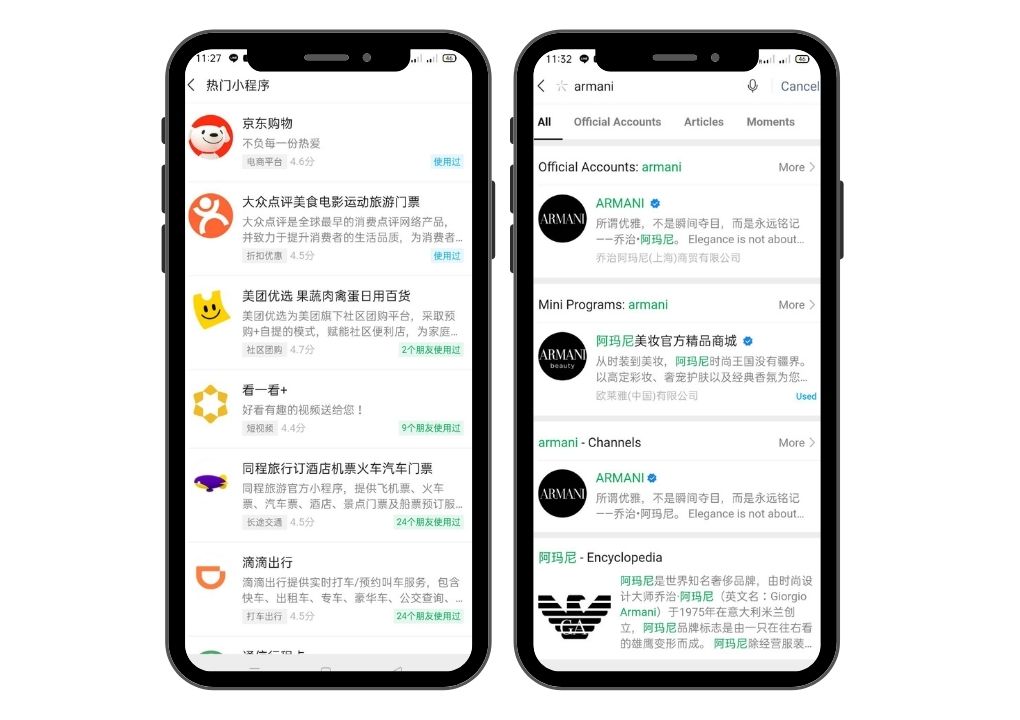
Influencer Marketing
By partnering with key opinion leaders (KOLs) on platforms like WeChat and Weibo, app developers can reach a massive audience with targeted campaigns that resonate with their target demographics.
Moreover, when working with influencers, it’s important to align your brand carefully and ensure they have an authentic connection to your message. Loyalty and trust are the two most significant drivers of influencer effectiveness among Chinese consumers. Brands must choose KOLs who share similar core values and beliefs as their own brands so that they can speak authentically about them – this will maximize engagement rates and lead them closer toward viral growth potential.
Post-Launch Support And Maintenance
Customer Support And Community Management
Customer support and community management play essential roles in ensuring an optimal user experience, which can positively impact customer retention and loyalty. It is important to have a local team or partner with expertise in handling customer inquiries, complaints, and feedback promptly.
Community management involves building relationships with users through various channels such as social media platforms like WeChat, forums, or email. Creating engaging content that resonates with your target audience based on their interests is key to building brand awareness and fostering a sense of community among users.
It’s also vital to keep optimizing the app for the Chinese market continually. This process includes consistently adapting features that cater to Chinese consumers’ preferences while staying compliant with regulations regarding data privacy and security.
Localizing App Updates And New Features
Updating an app for a foreign market requires more than just translating new features into the local language. It’s important to also consider cultural adaptation and regional preferences when localizing updates.
To ensure your app is tailored to Chinese users’ needs, conduct market research on the latest trends and popular features in the region you’re targeting. Also, localize not only text but also graphics and other visual elements of your app’s interface. Doing so will improve user experience and increase retention rates among Chinese users.
When rolling out updates or new features, it’s crucial to perform localization testing before releasing them into the market fully. This process helps identify any bugs or misunderstandings that may arise due to language barriers or differences in cultural context.
Monitoring And Addressing User Feedback
It’s essential to keep a close eye on user reviews, which can provide valuable insights into what users like or dislike about your app. In China, App Store reviews are especially important as they heavily influence users’ decisions to download an app.
To effectively address user feedback, it’s necessary to have a system in place for tracking and responding promptly. One useful tool is the App Store Connect for iPhone and iPad, which enables developers to view and respond to user reviews directly on the platform. Additionally, having efficient customer support channels such as email or social media can help address users’ concerns quickly.
It’s also important to take user feedback seriously when updating your app with new features or changes. Localizing updates based on Chinese users’ preferences can improve engagement rates while demonstrating that you value their input.
Conclusion And Key Takeaways
In conclusion, launching your app in the Chinese market is a challenging but lucrative opportunity. The potential for growth and revenue is enormous, but success requires careful planning, localization efforts, and compliance with regulations.
To succeed in the Chinese app market, you must understand local user behavior and cultural sensitivities while also adapting to regulatory requirements like content censorship. Leverage promotional strategies that are effective within China’s unique social media space for maximum outreach.

By engaging our services, you can leverage our extensive 20 years of experience in this field. We understand the intricacies of the Chinese market and possess the expertise to navigate its complex landscape. Partnering with us will not only provide you with valuable insights but also open doors to lucrative business opportunities within China.
With millions of potential users in China spending countless hours on their mobile devices, having a seasoned partner by your side ensures that your app will receive the visibility it deserves. We will work diligently to maximize your app’s exposure and reach, enabling you to tap into this vast user base.
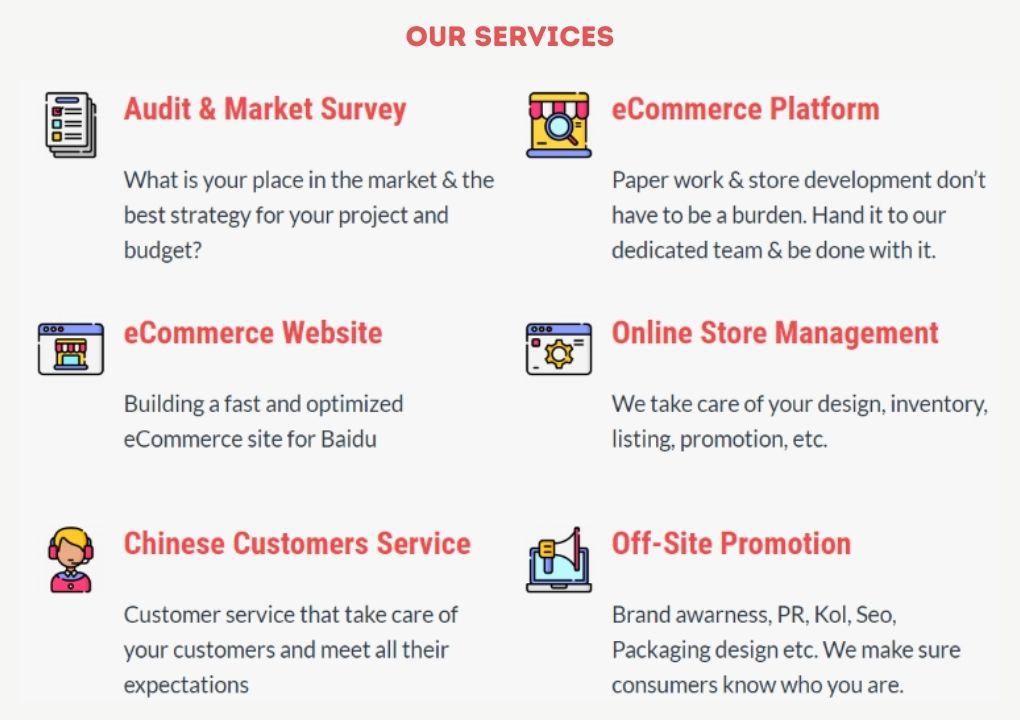
Additionally, our commitment to post-launch support sets us apart. We understand that exceptional customer satisfaction is paramount to sustaining long-term growth. Our dedicated team will provide top-notch support, addressing any issues or concerns promptly and ensuring that your users have a seamless experience.
By hiring us, you not only gain access to our wealth of experience but also secure a reliable partner dedicated to your success. Together, we will navigate the dynamic Chinese market, seize opportunities, and position your app for success.







